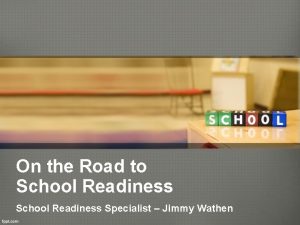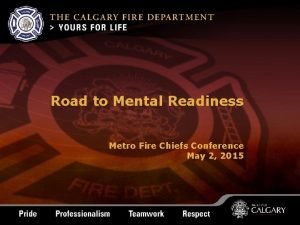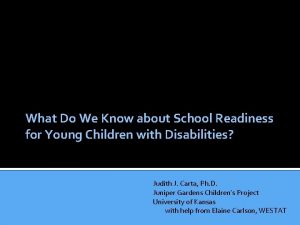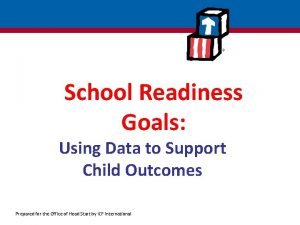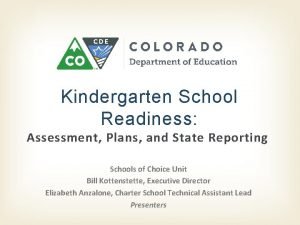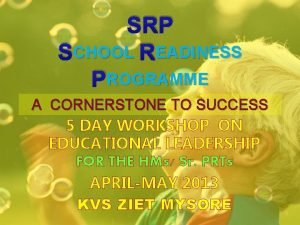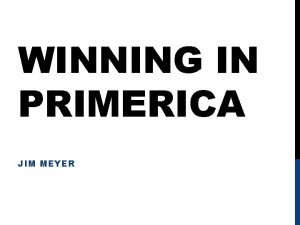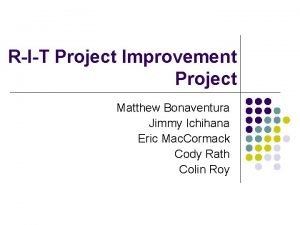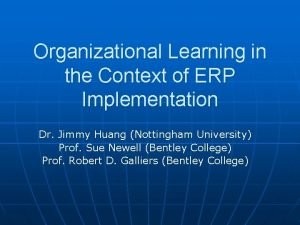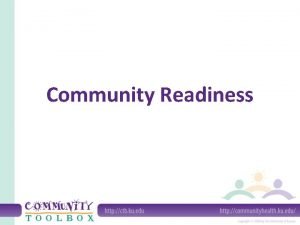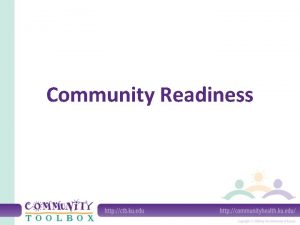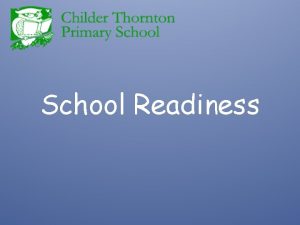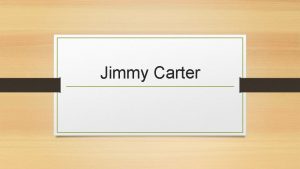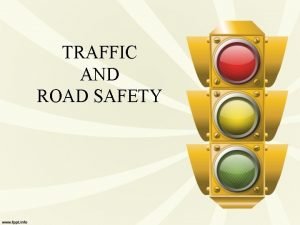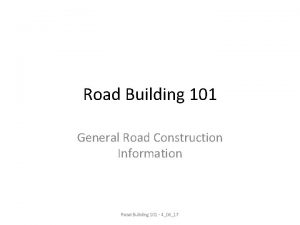On the Road to School Readiness Specialist Jimmy

















- Slides: 17

On the Road to School Readiness Specialist – Jimmy Wathen

Welcome and Introductions • Chart Years of Experience Presenter Information: • Jimmy Wathen – School Readiness Specialist: Jefferson County Schools

August 1, 2017 Did you know?

Kindergarten Entrance Age • Beginning 2017 all children entering kindergarten in the state of Kentucky will be required to be 5 years of age on or before August 1. (KY Senate Bill 24) • What is the significance of this change? • What are the implications?

Commit and Toss • What is most crucial for a child to master before entering kindergarten or to be school ready? • From the following list select only one item. • Mark your choice on the paper provided.

Choose only one. . . and commit A. B. C. D. E. Child should know the letters of the alphabet, numbers from 1 -20, shapes, and colors. Child should be able to get along with other children. Child should know how to write his or her own name and recite their home address. Child should be healthy, happy, and eager to learn. Child should be able to attend to their own self help skills: toileting, zipping, buttoning, etc.

Toss. . • Crumple your paper into a ball • Stand as a group • On the signal, toss your paper to someone else in the room

Group and Share Form like groups according to the response on the form that was tossed to you i. e. all C) responses should form a group or all A) responses should form a group. There are letters around the room for your group to form. Take a few minutes to discuss and share any comments that were listed on the sheets you were tossed among your group members.

History of School Readiness • When did the first kindergarten open? • The first kindergarten opened in Blankenburg, Germany, in 1837. Known as a garden for children. Frederick Froebel (1782– 1852) designed this system to offer a preschool education to young children in a less formal environment.

Nurturing Environments • Froebel’s plan was to offer an organized setting in which children's creativity and play instincts were nurtured in a constructive and supervised manner. He believed that children could be taught to become better, more cooperative learners through the use of tools like songs, stories, games, and other group activities.

First in America • The central idea of his theory was that a good education starts with learning creative expression and social cooperation. This concept had a direct influence on American school systems. In 1856 the first American kindergarten was founded in Watertown, Wisconsin, and by the end of the nineteenth century it had become a standard part of the American educational philosophy.

War on Poverty • • The Head Start Program is a program of the United States Department of Health and Human Services that provides comprehensive education, health, nutrition and parent involvement services to low-income children and their families. Launched in 1964 by its creator and first director Jule Sugarman, Head Start was originally conceived as a catch-up summer school program that would teach low-income children in a few weeks what they needed to know to start kindergarten.

Early Influences • Experience showed that six weeks of preschool couldn't make up for five years of poverty. The Head Start Act of 1981 expanded the program. The program was further revised when it was reauthorized in December, 2007. Head Start is one of the longest-running programs to address systemic poverty in the United States. As of late 2011 more than 22 million preschool aged children had participated.

What is School Readiness? That depends. . . Various organizations have adopted their own official definition of school readiness.

State of Kentucky • School readiness means each child enters school ready to engage in and benefit from early learning experiences that best promote the child’s success. (Governor’s Task Force on Early Childhood Development and Education, November 2010)

Head Start The Head Start Approach to School Readiness means that children are ready for school, families are ready to support their children’s learning, and schools are ready for children. ( Head Start Act of 2007)

NAEYC School readiness involves more than just children. School readiness, in the broadest sense, is about children, families, early environments, schools, and communities. Children are not innately “ready” or “not ready” for school. Their skills and development are strongly influenced by their families and through their interactions with other people and environments before coming to school. (National Association for the Education of Young Children, 2004)
 Road to school readiness
Road to school readiness Road to mental readiness
Road to mental readiness What is paved and unpaved road
What is paved and unpaved road Kings college maths school
Kings college maths school School readiness goals
School readiness goals School readiness goals
School readiness goals Colorado kindergarten readiness assessment
Colorado kindergarten readiness assessment High school readiness
High school readiness School readiness programme in kvs
School readiness programme in kvs Bob safford primerica
Bob safford primerica Jimmy ichihana
Jimmy ichihana Jimmy huang nottingham
Jimmy huang nottingham Canciones belgas más famosas
Canciones belgas más famosas Jimmy carter
Jimmy carter Gadsden purchase jimmy fallon
Gadsden purchase jimmy fallon Leeftijd jimmy frey
Leeftijd jimmy frey Barry liked playing board games
Barry liked playing board games Coupon craze
Coupon craze
